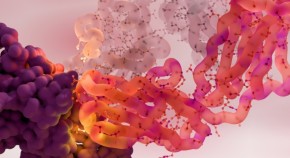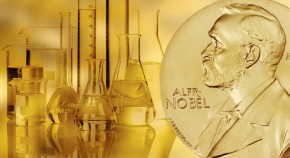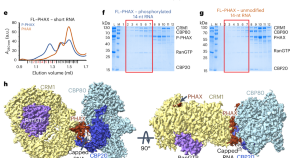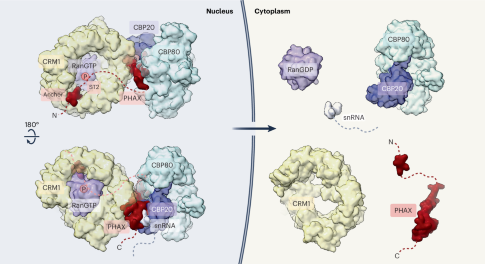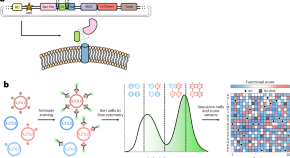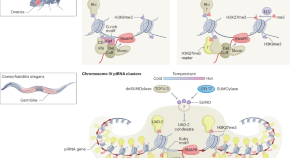Nature Structural & Molecular Biology (original) (raw)
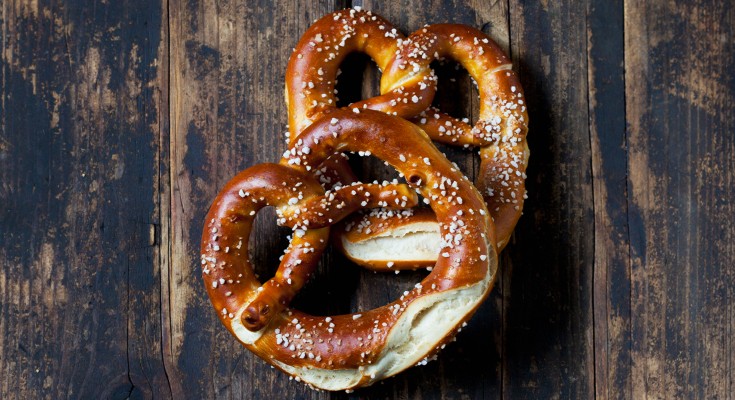
RNA loops in splicing
Two studies report cryo-EM structures of naturally occurring circularly permuted group II introns revealing mechanisms of branching, self-splicing and circular RNA formation.
Featured
- Review Article30 Jun 2025
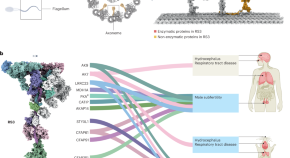
A metabolic hub in ciliary and flagellar motion
Radial spokes link the doublet microtubules at the periphery of the cilium to the central pair complex at its core. The detailed morphology and function of the radial spoke 3 (RS3) complex was unknown, but a new study reports its structure and reveals its role in metabolism.
- Zhuang Xiao
- Mingxi Liu
News & Views27 Jun 2025
Announcements
Collection on AI in structural biology
New call for submissions to our cross-journal collection on Artificial Intelligence Methodology and Applications in Structural Biology
Open for submissions
Nobel Prize in Chemistry 2024
The 2024 Nobel Prize in Chemistry has been awarded to David Baker “for computational protein design” and to Demis Hassabis and John M. Jumper “for protein structure prediction”. In recognition of this award, Nature Portfolio presents a collection of research, review and opinion articles that celebrates both contributions by the awardees and the advances they have inspired.
Nobel Prize in Physiology or Medicine 2024
The 2024 Nobel Prize in Physiology or Medicine has been awarded jointly to Victor Ambros and Gary Ruvkun "for the discovery of microRNA and its role in post-transcriptional gene regulation". To celebrate the award, Nature Portfolio presents a Collection, which includes publications from the winners, essential reviews on the topic, and further insightful research.
Latest Research articles
Structural basis for the synergistic assembly of the snRNA export complex
Dubiez and colleagues present a cryo-EM structure of the complex responsible for nuclear export of pre-small nuclear RNAs, comprising CBC–PHAX–CRM1–RanGTP. The structure provides insights into the complex architecture, assembly and target RNA recognition.
- Etienne Dubiez
- William Garland
- Stephen Cusack
ArticleOpen Access03 Jul 2025 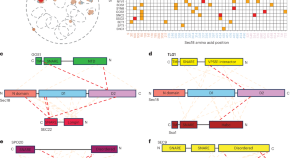
SNARE disassembly requires Sec18/NSF side loading
Khan et al. show that Sec18 uses both D1 and D2 AAA+ rings cooperatively, opening them laterally for SNARE substrate loading and for subsequent release of SNAREs.
- Yousuf A. Khan
- K. Ian White
- Axel T. Brunger
ArticleOpen Access02 Jul 2025 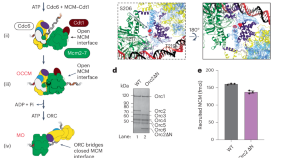
Cell cycle regulation has shaped replication origins in budding yeast
Licensing of eukaryotic origins of replication with MCM double hexamers (DHs) can occur through distinct pathways. Here, Lim et al. show that in yeast, cell cycle-dependent regulation of DH formation by CDK and origin structure have co-evolved.
- Chew Theng Lim
- Thomas C. R. Miller
- John F. X. Diffley
ArticleOpen Access30 Jun 2025
Latest Reviews & Analysis
Assembly mechanism of the snRNA nuclear export complex
Maturation of snRNAs, key parts of the spliceosome, involves nuclear export of newly synthesized snRNAs to the cytoplasm. PHAX is known to mediate snRNA export in a phosphorylation-dependent manner, but the underlying mechanism remains elusive. A cryo-EM structure of a PHAX-containing snRNA export complex now provides insights into the pathway.
A metabolic hub in ciliary and flagellar motion
Radial spokes link the doublet microtubules at the periphery of the cilium to the central pair complex at its core. The detailed morphology and function of the radial spoke 3 (RS3) complex was unknown, but a new study reports its structure and reveals its role in metabolism.
A generalizable multiplexed assay of variant effects for secreted proteins
We created an assay to simultaneously measure the effects of variants in secreted proteins at scale. We used the assay to map the effects of all possible missense variants on factor IX secretion and γ-carboxylation. The resulting data reclassified more than 60% of variants of uncertain significance in hemophilia B.
H3K27me3 expands the epigenetic control of piRNA transcription
Constitutive heterochromatin can promote piRNA transcription, a crucial step in genome defense. Two studies now show that piRNA transcription in Drosophila is regulated by the dual histone marks H3K27me3 and H3K9me3, and piRNA transcription in Caenorhabditis elegans is enhanced by H3K27me3, gene clustering and phase separation.
